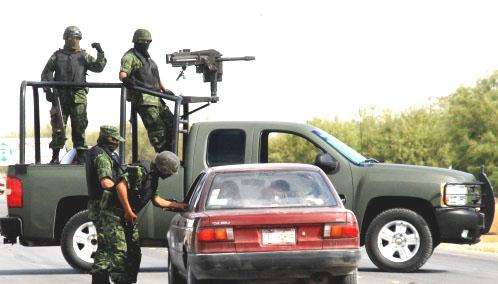How to Run a Drug Cartel
The black market is driven by the same forces as any other economic enterprise.


To understand how drug cartels work, we should consider the industry as we would any other that has to deal with regular business problems–how to hire the best personnel, how to handle the competition, how to deliver product to customers, and so on.
That is what Tom Wainwright sets out to do in his new book, Narconomics: How to Run a Drug Cartel. "Regulatory approaches that in the ordinary business world would be discarded for their ineffectiveness have been allowed to endure for years in the world of counternarcotics," says the author, a former correspondent in Mexico for The Economist.
He cites an example from the Andean countries to illustrate how the supply-side fight to reduce drug consumption is absolutely useless. The cost of the coca leaf is so low compared to the high price of cocaine in consumer countries that even if intervention in South America were to double the price of coca, it would have only a negligible impact on consumers in the United States or in Europe.
While travelling two weeks ago in the Mexican state of Sonora, local businessmen told me several people were recently executed in the nearby city of Ciudad Obregón–allegedly, a settling of scores between drug dealers. They confirmed what Wainwright observes: Violence in Mexico tends to be higher in those states bordering the United States and in those with major ports. Drug dealers fight to control these few points of entry and exit. Since supply-side restrictions have almost no impact on drug consumption, the author recommends opening more points of entry on the northern border. At least that would reduce the violence considerably.
In an illicit industry, recruiting low-skilled workers is challenging because the jobs require discipline and a high level of trust. Prisons in Latin America have made drug traffickers' lives easier, since these have turned into virtual business schools, where the most experienced people in the business are put in touch with those interested in illegal activities. This is also where gangs gain strength, among other ways by requiring their members to get conspicuous tattoos to reduce the dangerous possibility of them leaving the organization.
More than a decade ago, the Dominican Republic implemented a penitentiary reform recommended by Wainwright. The country has jails where gang leaders are separated from the rest of the inmates, fewer criminals are imprisoned, and real jobs are given to inmates, who are also allowed to keep a percentage of the earnings to share with their families. All of this reduces the convicts' dependence on gangs and helps them maintain contact with the legitimate outside world. Under the new system, only 3 percent of those who are released from prison are likely to commit another crime in the following three years, whereas there was a 50 percent recidivism rate under the old system.
Wainwright describes how the homicide rate dropped by two thirds in El Salvador when the maras (gangs) reached a truce in 2012 so as to be able to collude in the domestic marketsomething that was undone when the next president withdrew his support, thus increasing violence once again. He also describes how drug cartels practice corporate social responsibility (church charity, providing public services, etc.) to maintain a certain level of support among the local population, and how the new competition resulting from marijuana legalization in parts of the United States is already taking away a significant amount of business (up to three quarters of the their current revenues, according to Mexican experts the author cites).
Wainwright also predicts that when fully legalized, American marijuana companies will move to Mexico to export their products to the United States. That would be a more civilized world.
